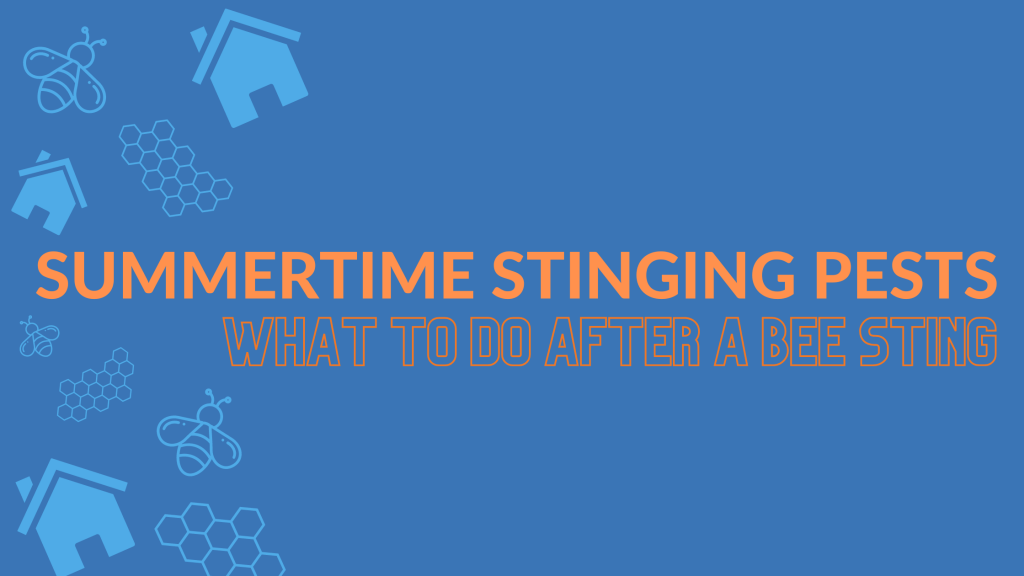Summertime Stinging Pests – What To Do After A Bee Sting

This time of summer you can expect to see a number of stinging pests out and about, either bumbling near flowering plants or buzzing around your bbq. While bees themselves generally tend to keep to themselves, they are apt to sting when threatened. These stings send more than half a million people to the emergency room in the United States alone. To keep your family safe while enjoying the outdoors, and hopefully avoid an expensive trip to the ER, it’s important to know what to do after a bee sting.
Bee Sting Symptoms
Most people experience a sharp, burning pain followed by a red welt at the site of the bee sting. You’ll likely see a tiny white spot in the center of the welt, in the location where the stinger has actually penetrated the skin. The swelling and pain will typically subside within just a few hours but particularly sensitive individuals may experience a worse, longer-lasting reaction. A more severe reaction can result in the welt actually getting larger, growing up to 4” in diameter, but symptoms of that often resolve after 5-10 days.
For the unfortunate individuals that are allergic to bee stings, the reaction to a bee sting can cause anaphylaxis, which can be deadly. Symptoms of anaphylaxis include rashes, hives, tongue or throat swelling, nausea, vomiting, wheezing, dizziness, and sudden loss of consciousness. If your family member experiences symptoms following a bee sting or has a known allergy, utilize the proper tools they’ve been prescribed and seek out medical assistance or call 911 immediately.
Common Bee Sting Aftercare
After getting stung, you’ll want to remove the bee stinger as quickly as possible. Doing so can help prevent a more severe reaction, infection, or foreign body reaction. To remove the stinger, simply pinch or scrape the stinger and carefully pull it out using a pair of tweezers.
After removal, soap and water can be used to clean the area. A cold compress or ice pack can help alleviate the pain and help with the swelling. If the sting was on an extremity of the body, you can also try elevating the limb to further help reduce pain and swelling. There are also over-the-counter anti-inflammatory medicines that can help – ask your local pharmacist for recommendations. For those who experience a more severe reaction, you may need to contact your healthcare provider for professional treatment.
Preventing Bee Stings
To help protect yourself from stinging pests around your backyard, the best course of action is to avoid beehives and pollinating bees. Bees are known to be defensive and typically attack as a swarm if they feel their home is being threatened. If you happen to have a hive in your yard, it’s best to call a professional pest control company, like Go2-Pros Extermination, to remove the nest, for the safety of yourself, your family, and your pets.
Here are a few other things you can do to prevent bee stings this summer:
- Avoid wearing perfume, cologne, or heavy scents if you’re planning to spend time outdoors as many stinging pests are attracted to sweet smells
- When eating outdoors, remember to cover and properly dispose of food (under a lidded trash bin) to deter stinging pests like wasps
- Keep in mind that while insect repellants work well against mosquitoes and ticks, they’re typically not effective against bees and other stinging pests
